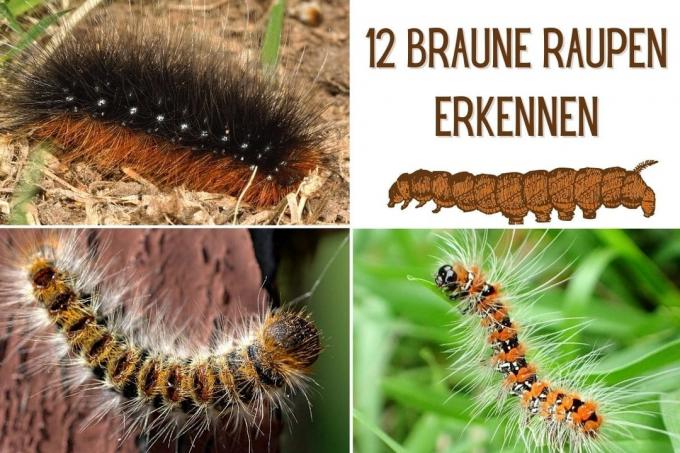
table of contents
- Differentiate between species
- Brown caterpillars from B to E
- Brown caterpillars from G to M
- Brown caterpillars from T to Z
- frequently asked Questions
Recognizing a brown caterpillar is not that easy in nature. Because of the coloring, the animals are well adapted to their environment and resemble branches or dried up leaves.
In a nutshell
- a brown caterpillar is well adapted in color to its surroundings and protected from predators
- different species can be very similar
- In some cases, it is hardly possible to make a precise distinction
- control is not necessary or advisable in every case
- caution is advised during removal in some cases
Differentiate between species
In order to be able to distinguish one brown caterpillar from another, extensive knowledge is often required. However, some clues can be used for orientation. These are among others:
- thickness
- length
- Markings or drawing
- Hairiness
- Time of occurrence
Brown caterpillars from B to E
Bear Moth - Erebidae
The bear moth belong to the group of butterflies and are beautiful to look at as adult moths. The thick hair is particularly noticeable.
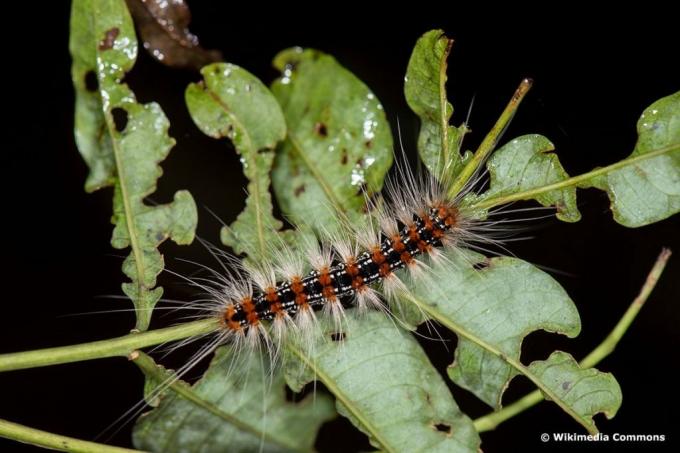
- maximum length: between 4.0 and 6.0 centimeters
- Time of occurrence: between July and August
- Nutrition: very large nutritional spectrum of grasses, herbs, shrubs and deciduous trees
- Color: gray to brown in various shades
- Special features: small and raised black-brown bumps on the top that look like warts
- Hairiness: well developed
The caterpillars are comparatively easy to spot because they are very hairy. However, there are more than 100 species of the bear spiders.
Broad-winged Banded Owl - Noctua comes
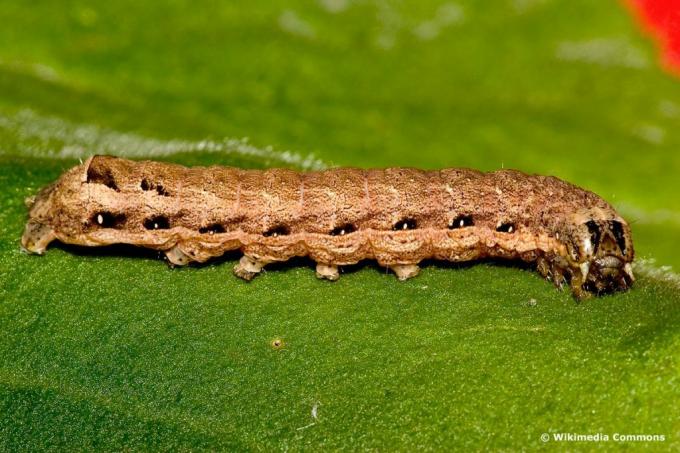
- maximum length: 6 cm
- Time of occurrence: between autumn and mid-May, one generation per year
- Diet: flowers, berry bushes, herbs, sour cherries
- Color: reddish gray to greenish brown
- special features: dark triangular spots along the sides and the rear end
- Hairiness: not available
Broad-winged Fleckleibbär - Spilosoma lubricipeda
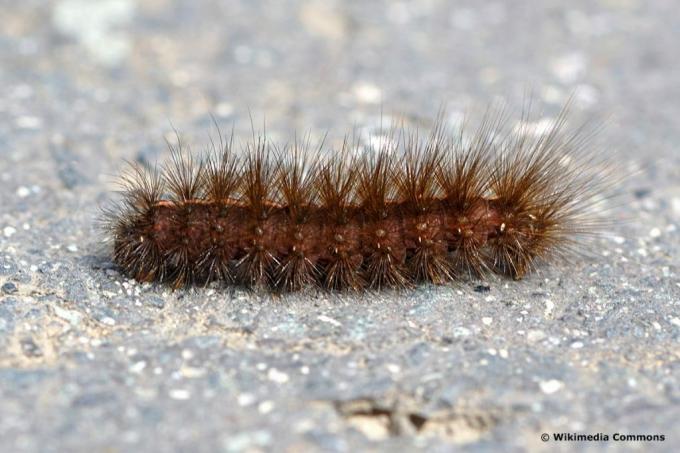
- maximum length: up to 4.0 centimeters
- Time of occurrence: in two generations from May to September
- Diet: herbaceous plants, berry bushes
- Color: gray-brown, black or red
- special features: light stripe on the back
- Hairiness: very hairy but rich in color to the body
Beech tooth spinner - Stauropus fagi

The beech tooth moth belongs to the moth family or in the technical language Notodontidae and also begins its cycle as a brown caterpillar.
- maximum length: 6 cm
- Time of occurrence: due to two generations once from April to May and once from June to August
- Diet: Deciduous trees such as beech, field maple, dogwood, English oak and hawthorn
- Special characteristics: the front legs are long and conspicuous, the rear part of the body is horny and protrudes
- Hairiness: not available
Brown Bear - Arctia caja
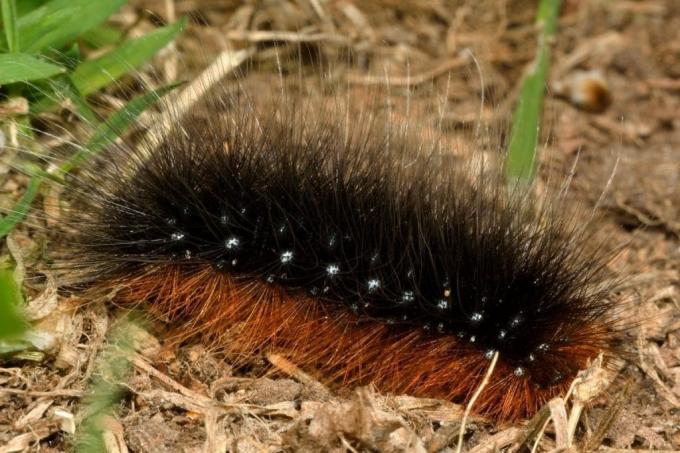
- maximum length: approx. 4.5 to 6.5 cm
- Time of occurrence: between July and September
- Diet: herbaceous plants, shrubs and trees
- Color: dark brown to black
- special features: white, wart-shaped growths along the back, the head is rust-red
- Hairiness: very long and dense
Oak moth - Thaumetopoea processionea
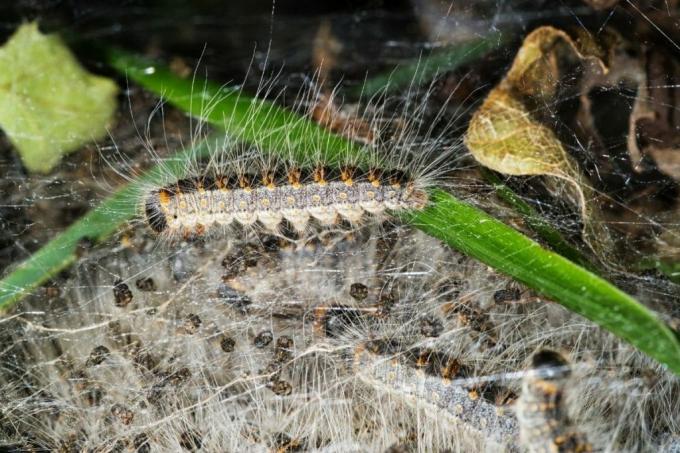
- maximum length: approx. 3 cm
- Time of occurrence: between May and July
- Diet: Leaves of deciduous trees such as beech, birch and oak
- Color: brownish, greyish with yellow spots
- Special characteristics: thick and long hairs, can defoliate entire trees
- Hairiness: stinging hairs that can trigger allergic reactions and pose a hazard
Note: Fighting these caterpillars is extremely useful because they pose a threat to humans, animals and the environment. Tree death in deciduous forests can to a large extent be traced back to the harmful moths.
Brown caterpillars from G to M
Goldafter - Euproctis chrysorrhoea
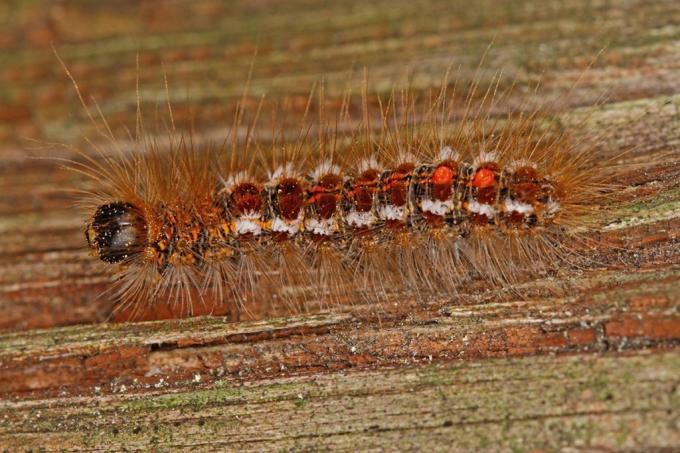
(also known as geimfyglið (:> )=| made with Star louse-spirit), Euproctis chrysorrhoea - Burgenland 2, Edited by Plantopedia, CC BY-SA 3.0
- maximum length: up to 3.5 to 4.0 centimeters
- Time of occurrence: July
- Diet: fruit trees and oaks
- Color: brown with gold markings at the rear end
- special characteristics: often occur in large numbers
- Hairiness: comparatively short
House mother - Noctua pronuba
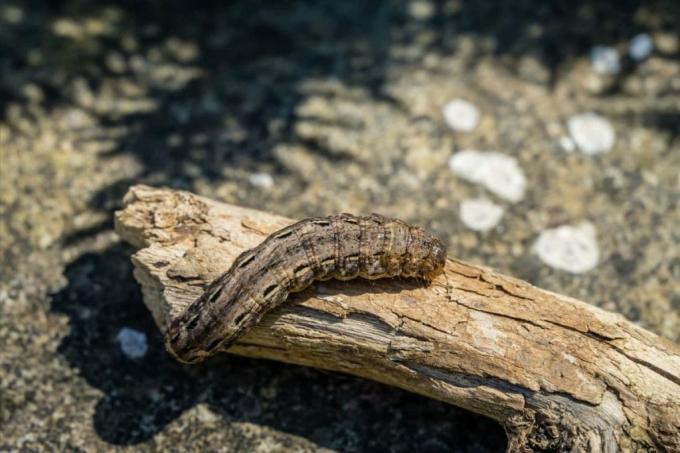
- maximum length: up to 5.0 centimeters
- Time of occurrence: between June and October
- Diet: herbaceous and woody plants
- Color: brown with drawing
- special features: yellow characters with black lines
- Hairiness: none available
Tip: The brown caterpillar and the moth itself are also known as the owl butterflies. From the third larval instar they are nocturnal.
Medium Wine Hawk - Deilephila elpenor

- maximum length: up to 8.0 centimeters
- Time of occurrence: between June and August, in a mild climate again between August and September
- Diet: fuchsias, spring herbs, Purple loosestrife, Evening primrose
- Color: green to black-brown in various shades
- special features: black dots on the front half of the body
- Hairiness: little and short
Brown caterpillars from T to Z
Peacock butterfly - Aglais io

- maximum length: up to 4.5 to 6.5 centimeters
- Time of appearance: hatching from July to August as two generations
- Diet: nettles
- Color: black with white dots
- Special features: occur in large numbers and can also be found in the house, provided with thorns
- Hairiness: none
Hawthorn Owl - Allophyes oxyacanthae
The so-called hawthorn owl is a butterfly and belongs to the owl butterfly family. In technical terminology, these are also referred to as Noctuidae.
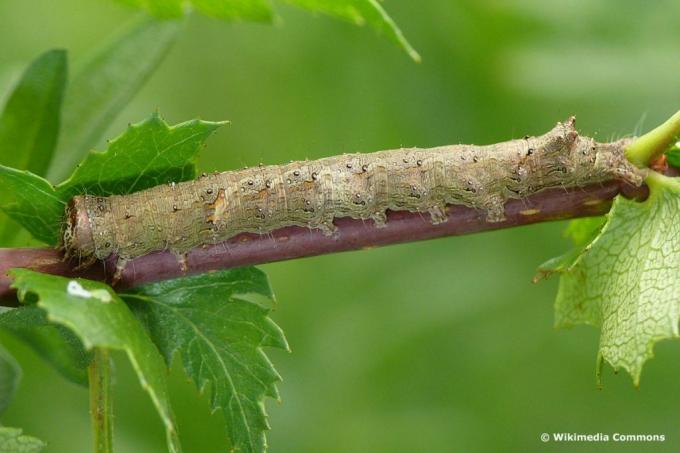
- maximum length: between 5.0 and 6.0 centimeters
- Time of occurrence: between July and August
- Diet: sloe and hawthorn
- Color: gray to brown with a dashed pattern
- Special features: small and raised black-brown bumps on the top that look like warts
- Hairiness: isolated and short
White-gray lichen bear - Eilema caniola

- maximum length: up to 3.0 centimeters
- Time of occurrence: up to three generations from May to October
- Diet: lichens and flowers
- Color: basic color light brown with reddish, dark spots
- special characteristics: warts
- Hairiness: very bristly but sporadic
Cinnamon Bear - Phragmatobia fuliginosa
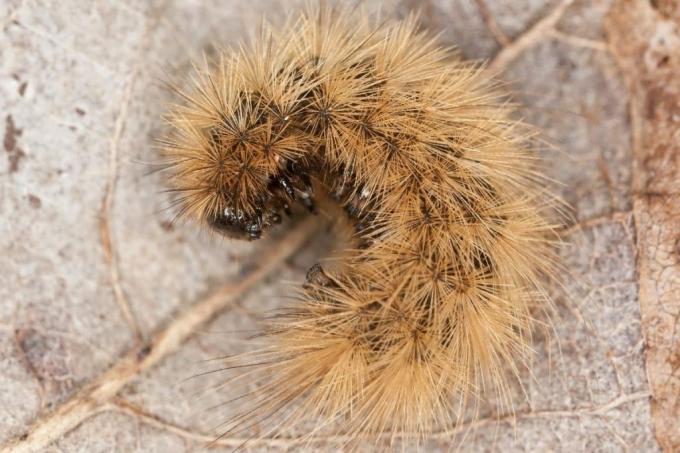
- maximum length: up to 3.5 centimeters
- Time of occurrence: up to three generations from May to October
- Diet: herbaceous plants from dandelions to blackberry leaves
- Color: basic color black-gray with red-brown or gray-brown hair
- special features: stripes on the back
- Hairiness: very hairy but rich in color to the body
Note: It doesn't look like a brown caterpillar, but rather appears reddish or even colorful.
frequently asked Questions
If the animals feed on poisonous plants, that is entirely possible. Hairy specimens can also cause irritation to the skin and respiratory tract.
When the caterpillars damage plants in the garden, the desire for effective control is understandable. Instead of pesticides, however, it is better to collect them and put them elsewhere. Alternatively, killing is also possible if the species are harmful.
When reading the caterpillars, direct contact with the skin should be avoided, especially in the case of hairy variants. Therefore, they should be removed either with gloves and a face mask or with tools.


